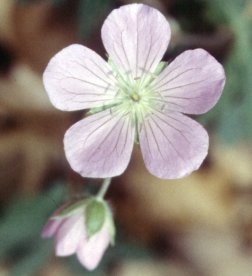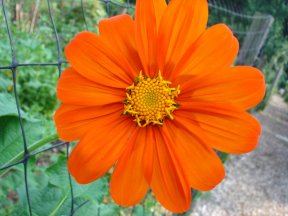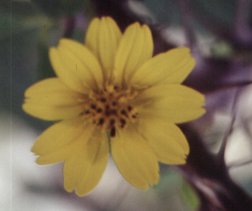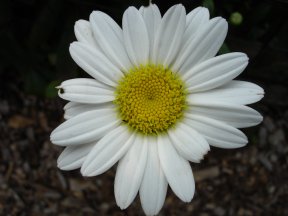When you count the number of petals that different flowers have, you’ll discover that the most common number of petals is five. Buttercups, geraniums, pansies, primroses, rhododendrons, tomato blossoms, and many other flowers have five petals.






You’ll also find flowers that have three petals (trillium), eight petals (delphinium), 13 petals (marigold, ragwort), and 21 petals (black-eyed susan).
The numbers 3, 5, 8, 13, and 21 are all Fibonacci numbers—members of a sequence in which successive numbers are sums of the preceding two numbers, starting with 1 and 1: 1, 1, 2, 3, 5, 8, 13, 21, 34, and so on. These numbers crop up surprisingly often in plants, from the clustering of petals on a flower to the arrangement of leaves on a stem.
It’s also easy to make too much of this coincidence. The number of petals per flower may vary from plant to plant and flower to flower in the same species. And it’s easy to find flowers with four (poppy, spring cress, cutleaf toothwort, forsythia, mint), six (snowdrop, tulip, gladiolus, iris, lily), seven (starflower), or nine (magnolia grandiflora) petals.
In a thought-provoking article in the Botanical Journal of the Linnean Society, biologist Todd J. Cooke of the University of Maryland discusses what he calls the “under-appreciated limitations of the Fibonacci sequence for describing phyllotactic patterns.”
“The Fibonacci literature has unbridled enthusiasm for identifying the putative involvement of the Fibonacci sequence in biological, and especially botanical, phenomena,” Cooke writes. “It makes one almost forget that the Fibonacci sequence was first devised as the solution to a hypothetical mathematical problem about rabbit population growth.”
For example, the mere occurrence of the numbers 2, 3, and 5 (and possibly multiples of these numbers) in some process is cited remarkably often to disclose the underlying participation of the Fibonacci sequence, Cooke notes.
That’s very misleading because these three numbers belong to many different sequences. They can’t be attributed exclusively to the operation of a Fibonacci or Fibonacci-related sequence, Cooke contends.
Neil J.A. Sloane’s On-Line Encyclopedia of Integer Sequences at http://www.research.att.com/~njas/sequences/, for example, catalogs more than 100,000 sequences of interest to mathematicians. When this database is queried for the sequence 1, 2, 3, and 5, more than 100 matches turn up (and less than 9 per cent are even Fibonacci-related sequences).
The following table, adapted from a table that accompanies Cooke’s paper, provides the results of querying Sloane’s database for short integer sequences derived from the primary Fibonacci sequence.
Query sequence |
Total matches |
Fibonacci-related sequences |
1, 2, 3, 5 |
> 100 |
9 ( |
1, 2, 3, 5, 8 |
> 100 |
37 ( |
1, 2, 3, 5, 8, 13 |
79 |
41 (52%) |
1, 2, 3, 5, 8, 13, 21 |
40 |
26 (26%) |
1, 2, 3, 5, 8, 13, 21, 34 |
26 |
22 (85%) |
The table “shows that a miniscule proportion of the number sequences including the short sequence of 1, 2, 3, and 5 are related to Fibonacci sequences,” Cooke writes. “Even the addition of 8 and 13 to this short sequence makes only 52% of the identified sequences related Fibonacci sequences.”
“Therefore,” he concludes, “identifying a small set of consecutive numbers as belonging to a Fibonacci sequence is a necessary but not sufficient criterion for establishing the operation of the Fibonacci sequence in the biological pattern under investigation.”
Moreover, “just because some biological objects are grouped in a specific number found in the primary Fibonacci sequence, it does not mean that these objects are being arranged in accordance with the Fibonacci sequence,” Cooke argues.
Suppose, for instance, that a plant typically produces a structure composed of five units. If this plant or a related plant can also develop the same structure with three or eight units, then the evidence is stronger that the structure depends on the operation of a Fibonacci-based mechanism. However, if a plant occasionally produces structures composed of four or six units, then the involvement of a Fibonacci-based mechanism is much less likely.
So, you have to be careful when you’re building mathematical models of natural phenomena.
Check out Ivars Peterson’s MathTrek blog at http://blog.sciencenews.org/.






